President Huynh Quyet Thang shares his vision on the future of HUST
- Wednesday - 12/05/2021 16:31
- Close page
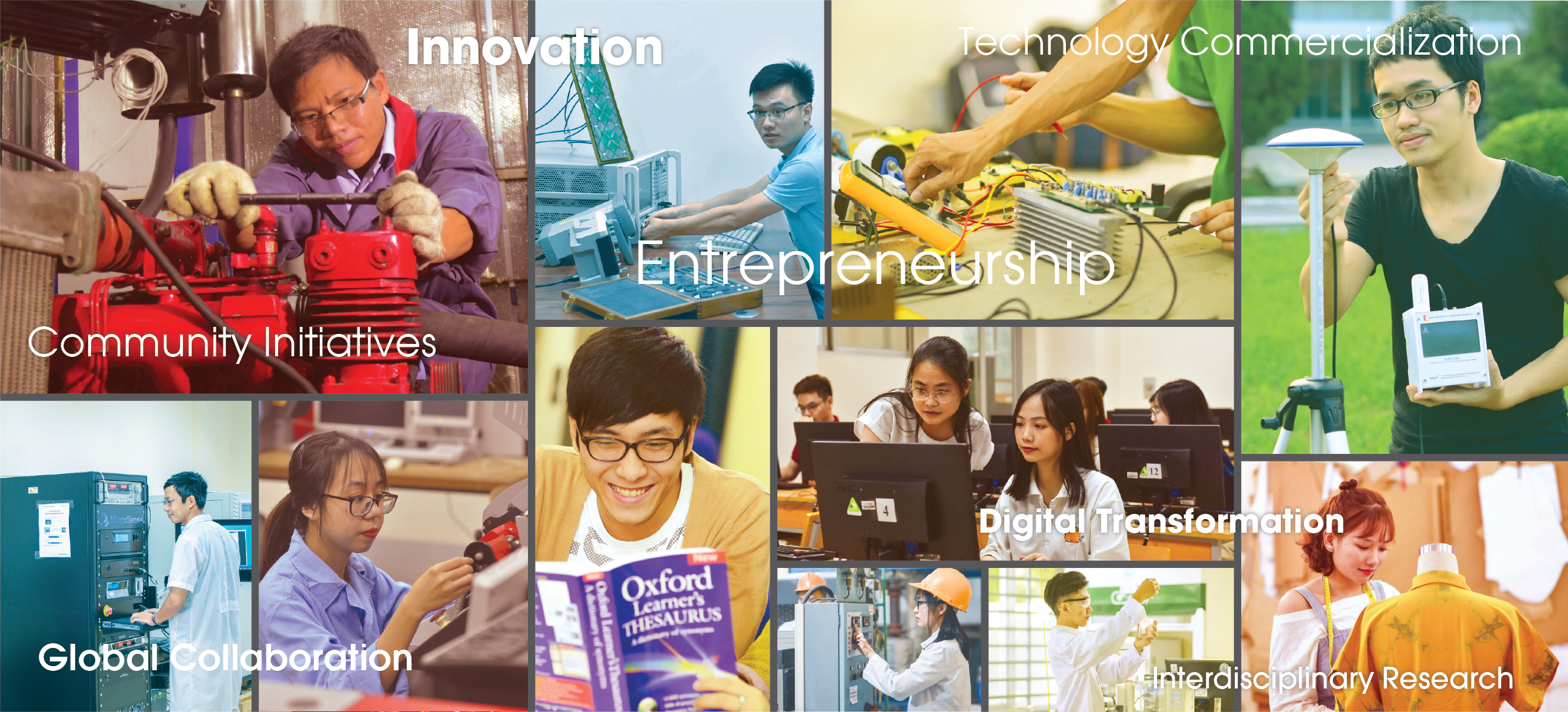
Hanoi University of Science and Technology (HUST) has gone through profound changes in leadership over the last year. The newly elected President Huynh Quyet Thang sat down for his first interview with the university’s magazine to discuss his responsibilities and missions as well as future plans to help HUST hold its position as the most innovative academic institution[1] in Vietnam.
“Hot seat”
Could you tell us about what it is like to be in the hot seat of HUST?
I took office as HUST President in September 2020. The honor of being selected for this role comes with a sense of responsibility, even a slight worry about what I need to do.
But I am delighted to see that HUST faculty and staff are keeping their upbeat spirit, and that the university is sustaining the momentum for growth. The result report of the fourth quarter of 2020, including undergraduate admissions statistics and innovation - creativity performance review, has bolstered staff confidence in a fast-growing HUST.
We now face fair competition from universities at home and aboard. I personally think I need to do my best and even beyond my best to meet the expectations of our students, faculty members and staff.
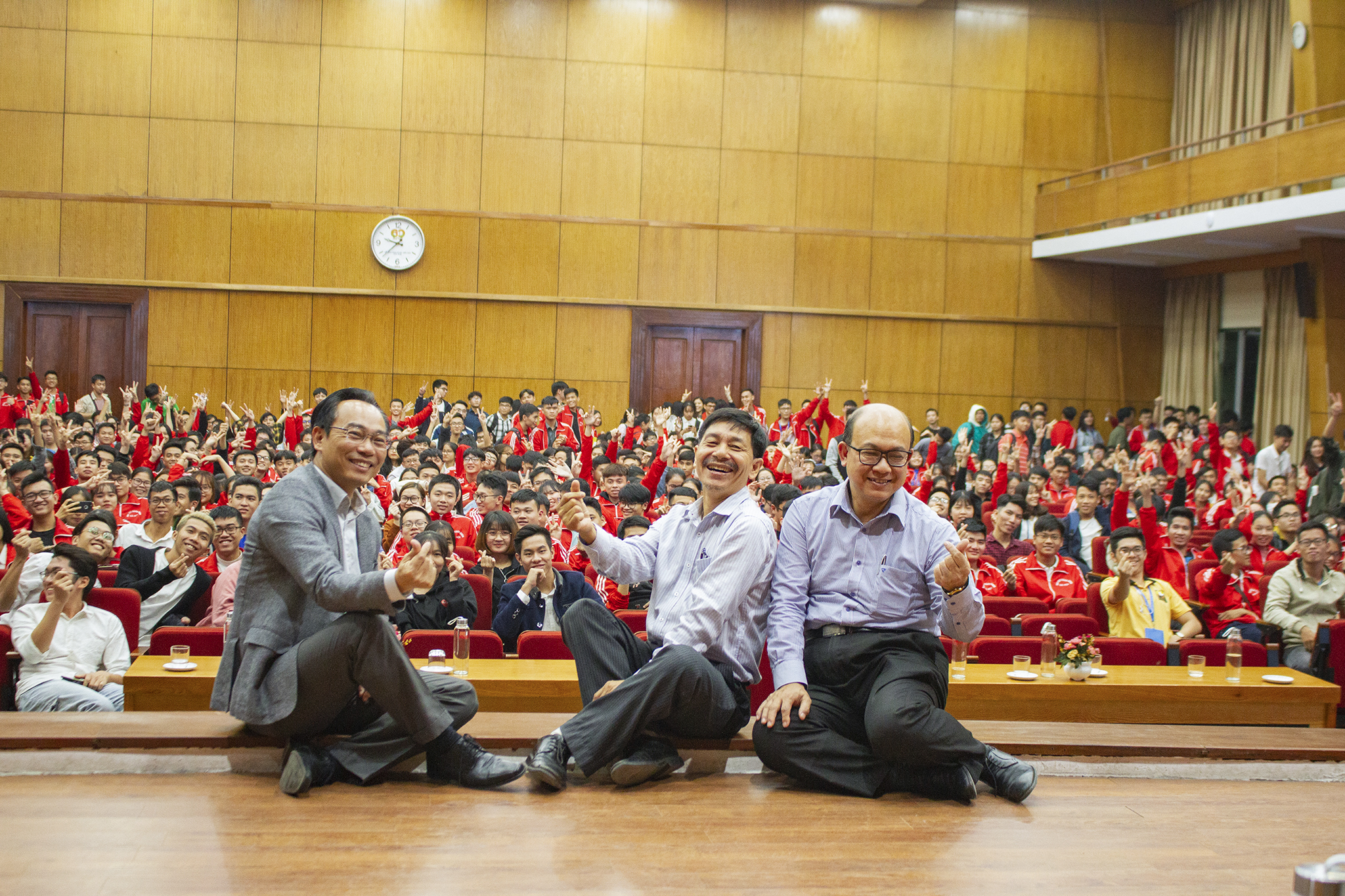
Associate Professor Huynh Quyet Thang (right) at the annual diaglogue with HUST students on December 29, 2019 at C2 Hall. Photo by HSA.
We are so used to Vice President Huynh Quyet Thang as a man of gentle and calm manner who always wears a smile on his face and treats people in a friendly way. I wonder how the Vice President Huynh Quyet Thang is different from the President Huynh Quyet Thang?
There is a radical difference in the roles and responsibilities of the university president and a vice president. A vice president has the duty to support the president on all matters pertaining to the general management of a specific field. A vice president must figure out how to complete his duties as best he can, at the same time, work with other vice presidents to assist and advise the president.
Meanwhile, the role of the president is particularly important as he is expected to do two essential things. First, the president is responsible for guiding the main goals in line with the missions of his 5-year term. Second, the president must engage in short-term and specific tasks, including 6-month or one-year plans. Based on such plans, the Board of Administrators would then work out more detailed plans with concrete objectives and requirements.
When it comes to a critical moment, the President is expected to decisively guide people through major obstacles. He must also demonstrate the leadership skills necessary for the pursuit of the approved goals and objectives by making sure that every plan is being executed in the right direction. It is important to achieve each short-term objective so that all the 5-year-term goals can be achievable.

A student rides a bicycle to HUST campus at sunset in November 2016. Photo by Tran Thanh Trung.
You spent one year on a special assignment at the Ministry of Education and Training. How has that one year of “looking to the outside” helped you in the management of the university?
I see my one-year stint at the Ministry of Education and Training as a truly valuable experience. There I worked with the steering committee of Information Technology which was led by the education minister and a deputy minister with most of its members as ministerial department-level leaders.
Through operating and planning activities and meetings with the minister, deputy minister and department-level leaders, I learnt a lot, from delegating authority, reviewing performance to overseeing the execution of a specific task and following the example of the minister and deputy ministers in finding practical solutions.
I think the one year at the Ministry of Education and Training has enriched my experience in managing, planning, and running work tasks. My experience with each division at the education ministry has greatly helped connecting the dots.
On innovation and creativity in higher education
There is a common idea that creativity and innovation at a university is dependent on the collaborations with businesses. Is it true?
When we talk about innovation and creativity in higher education, we talk about a lot of activities of which the industry-university cooperation plays a pivotal and central role.
In this era, innovation and creativity in higher education has become important to the growth of the nation.
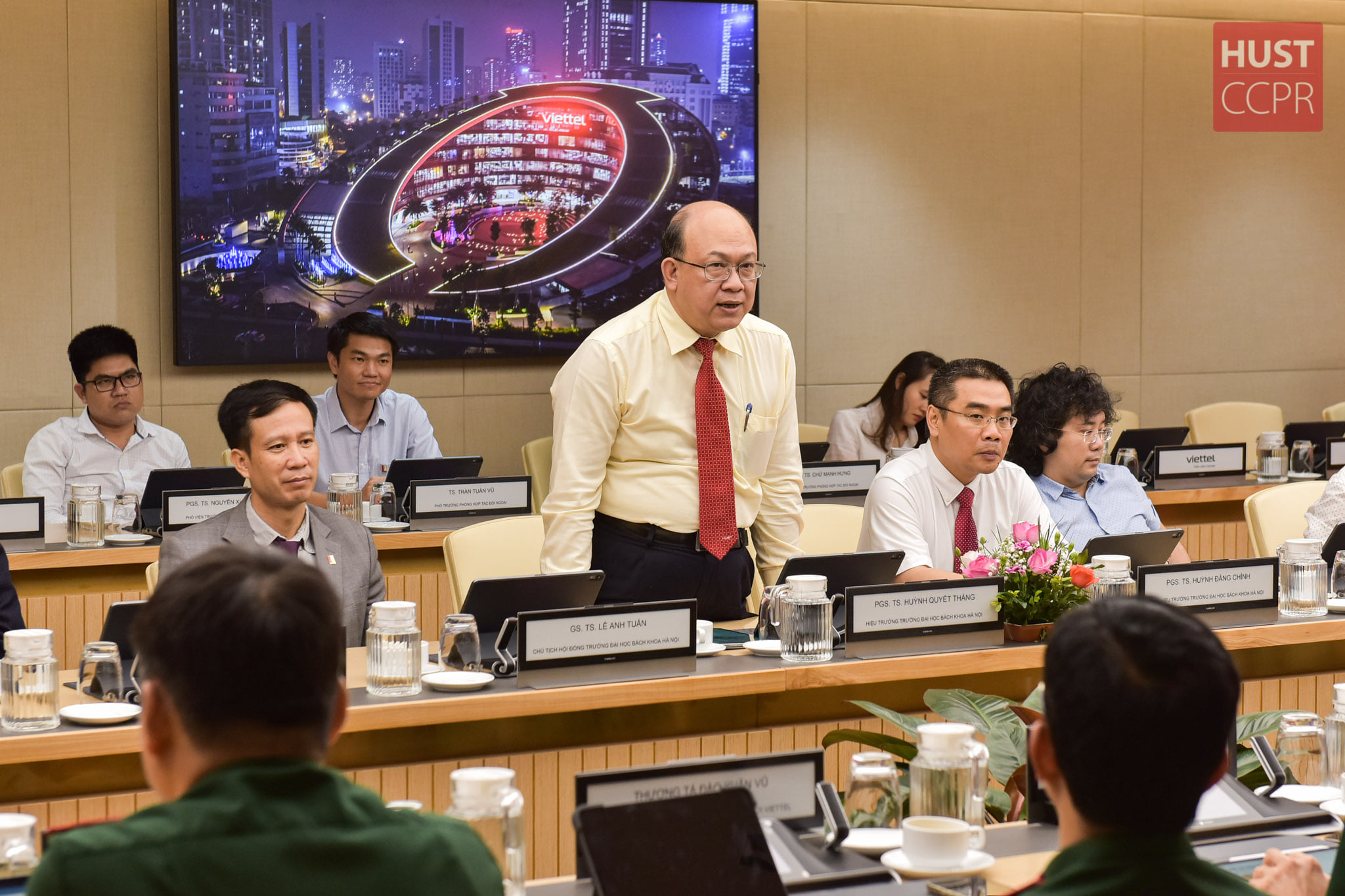
President Huynh Quyet Thang speaks at the signing ceremony of the strategic partnership with the country's largest telecommunication company Viettel on April 29, 2021. Photo by Duy Thanh.
Industry-university cooperation can strongly facilitate innovation and creativity in a way that students and faculty are encouraged to pursue education and research in line with the need of the society with concrete and specific goals.
Companies can seek tailored-solutions to their problems through collaboration with universities as an efficient way to use their available resources.
Based on such partnerships, we can come up with technology innovation and technical creativity which companies use in their business.
For our students and academic faculty, developing creative solutions to real-world situations enables them to carry out research, translate science into local products and build up made-in-Vietnam technology know-hows. They could also establish startups to drive their ideas to market by themselves.
That’s why industry-university collaboration boosts innovation and creativity, benefiting the economy and the nation as a whole.
Hanoi University of Science and Technology has a community of truly outstanding students and faculty who are passionately interested in technology and science and enthusiastically engaged in doing research.
I think now comes the time that our university should get ready for both opportunities and challenges waiting ahead of us in the upcoming years.
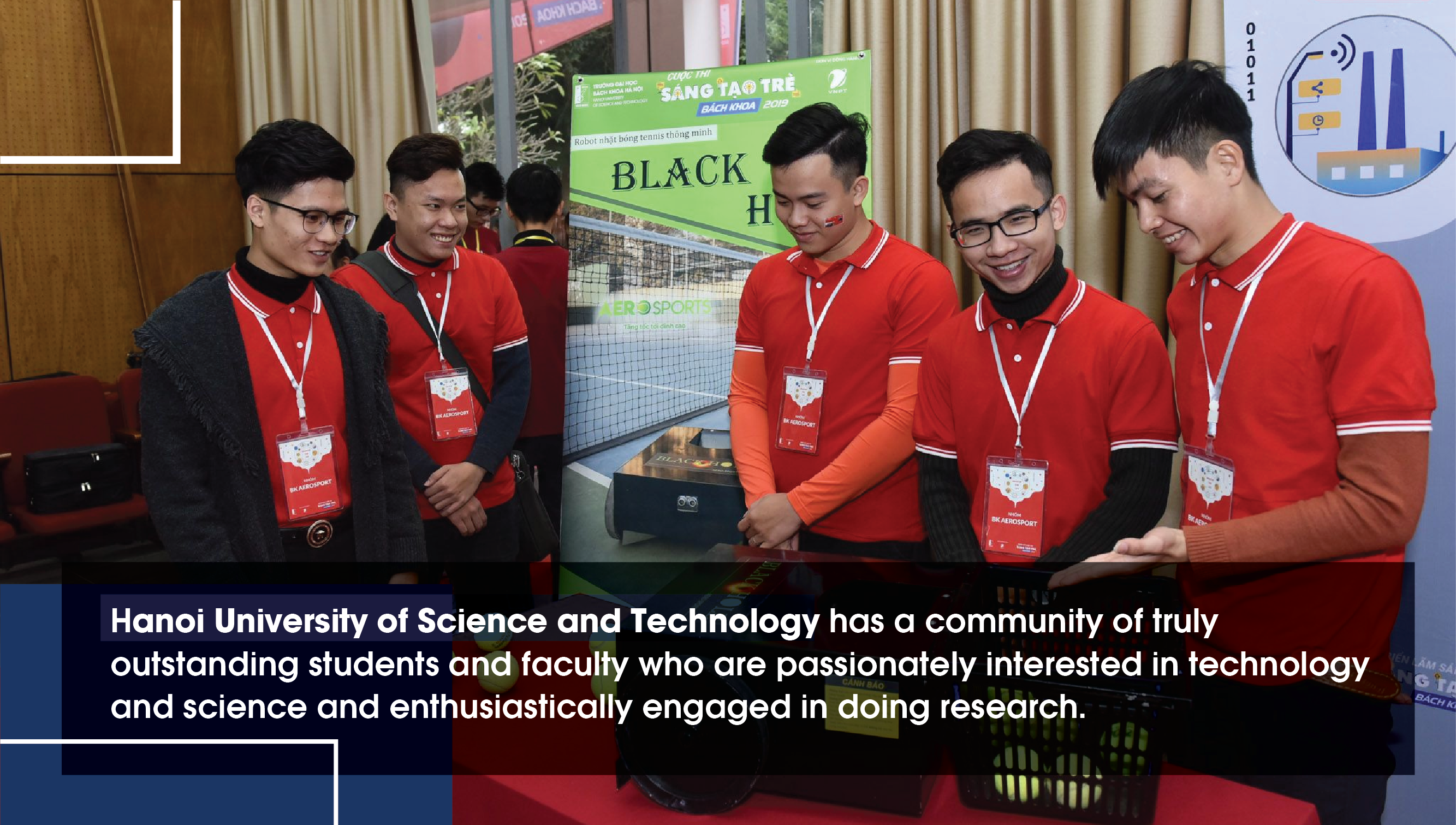
Graphic Designing by San Le
You once compared, at a seminar, a university to an unconventional business offering science and technology products and services. How could you run a university like a business to ensure that it will not sell its products- innovative ideas- short?
Why do we say that colleges and universities are unconventional businesses in science and technology? Resolution No.29-NQ/TW on fundamental and comprehensive reform in education to serve industrialization and modernization has provided guidance on how to adjust the management practice in higher education in line with the context of the Socialist-oriented market economy.
The country is integrating fast into the international market. Science and technology are rapidly developing around the world. The competition among universities has intensified further. Thus, the idea of running a college or university like an unconventional business, with an aim to improve its performance, has become a necessary and sensible approach.
Hanoi University of Science and Technology is defined by its educational philosophy and its own values of personal growth in a supportive academic environment. In the present context, the university also needs to improve its management practice to quickly respond to scientific and technological advances.
Now comes the answer to the question of how we run colleges and universities as businesses so that its products- here are innovative ideas- are not undervalued. We must understand that colleges and universities produce two products. First, the university produces fresh graduates and engineers with knowledge, professional skills and personal qualities needed for the world of work. Second, we, both faculty and students, produce scientific research products. As a university, we need to improve the quality of these two products to prove the value of “Hanoi University of Science and Technology” brand to the society.
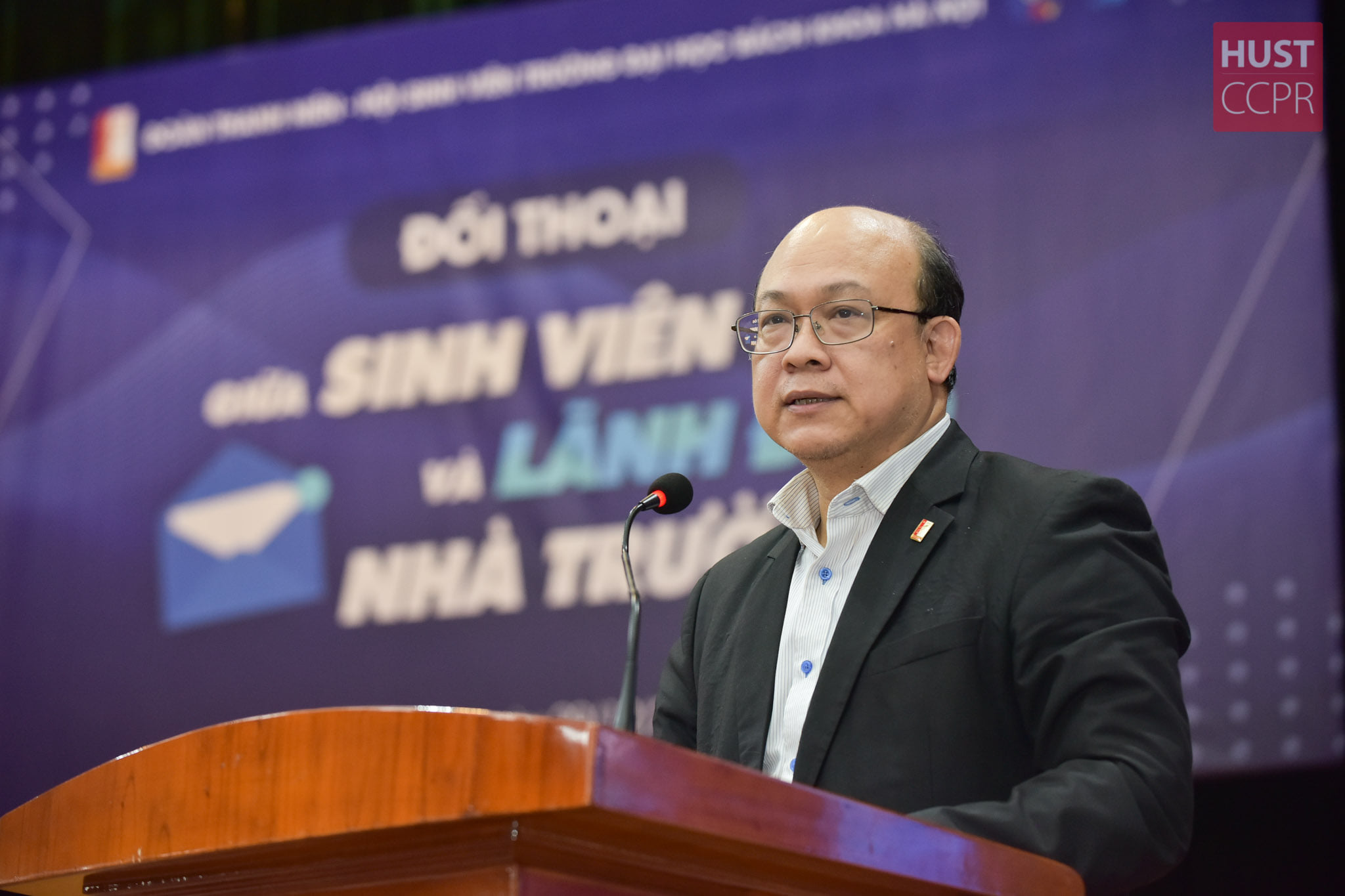
President Huynh Quyet Thang speaks at the annual diaglogue with HUST students at C2 Hall on Febuary 29, 2020. Photo by CCPR.
Is the role of companies, agencies and individuals as intermediaries to facilitate innovation necessary?
Innovation is an ecosystem or a linked chain that facilitates the process of doing research and developing creativity within the university.
We understand that faculty members and students form the backbone of the university. Students can find a club or group on campus to get together with their friends to nerd out ideas and thoughts which their heart desires. Through such activities, they can match their interests in scientific research.
Furthermore, we offer research opportunities that allow undergraduate students perform hands-on projects with faculty mentorship and guidance.
There are three types of research laboratories at the university. The first is focused on fundamental research. Hundreds of academic papers published each year come from these laboratories. Many undergraduates, included as co-authors on them, are highly likely to win master’s degree or Ph.D. scholarships from international universities.
The second is what we call applied research laboratories aimed at solving practical problems. At these laboratories, our research groups work on constantly changing technologies which are in demand from the market, companies, and factories.
The third type of laboratories is solely involved with interdisciplinary research to develop products which tackle quality-of-life issues for the society.
It is up to the students to join whatever laboratories they feel like based on their own research interests, study ability and personal desires. With faculty mentorship and guidance, undergraduate students can even occasionally invent needed technology products for the marketplace.
And when they wish to launch their startup companies, they will need financial resources and mentorship on how to build a startup. The university’s BKHUP helps match students having active startup engagements with investors. We have worked on a strict process to assist HUST students, faculty, staff and alumni entrepreneurs in protecting their technology and in licensing that technology to existing companies.
We also have BK Fund which is the first venture capital fund officially launched by a Vietnamese university. The fund supports the university-connected start-ups from the very start and helps them roll out their ideas as quickly as possible.
The university is also about to build a Technology Transfer Office to assist BKHUP and BK Fund in seeking more funds, providing faculty members, Schools with the opportunities to transfer technologies to private enterprises and facilitating startup investments.
That is HUST’s innovation ecosystem where the Technology Transfer Office acts as the intermediary connecting related stakeholders and takes action in the best interests of all.

Which model has the university learnt from to shape the current innovation ecosystem?
Our past leaders did give this matter careful thought. And BK-Holdings, a HUST-affiliated company, was established as a result. There was a time when it was a breakthrough mindset. The role of BK-Holdings is to support research studies and technology transfer from university to industry.
My predecessors undertook research into innovation models at Chinese Tsinghua and American universities to build HUST’s early innovation ecosystem.
Our ecosystem has adjusted and grown greatly over the past 10 years. We have examined more models at many research universities from Europe, South Korea, Japan, and other countries.
In 2018, we joined with 6 universities, including three in Vietnam and three in Europe, to develop and refine our innovation ecosystem.
Faculty members are so far expected to drive innovation and creativity culture at universities. What about university leaders? What is their role in fostering innovation and entrepreneurship?
I think it is even more important that university leaders adopt an innovation and creativity mindset. A university’s development philosophy must be based on great ambitions, broad visions, and long-term goals.
Also we must always keep our core mission in sight, which is how to make education and research better and in the right direction; how to facilitate technology transfer between the university and industry; and how to sustain an entrepreneurial culture for startups. Such efforts are rewarded when the society places a higher premium on the university. That is always university leaders’ set of responsibilities.
Transformational leaders thus play a vital role in promoting innovation and creativity, navigating the university in the right direction, guiding students, faculty and staff to pioneering positions and earning the trust from its stakeholders and the society.
That’s why university leaders need to sustain the mindset of innovation and creativity. They must keep studying, doing research and applying the latest and the best models of innovation and creativity to that of HUST.
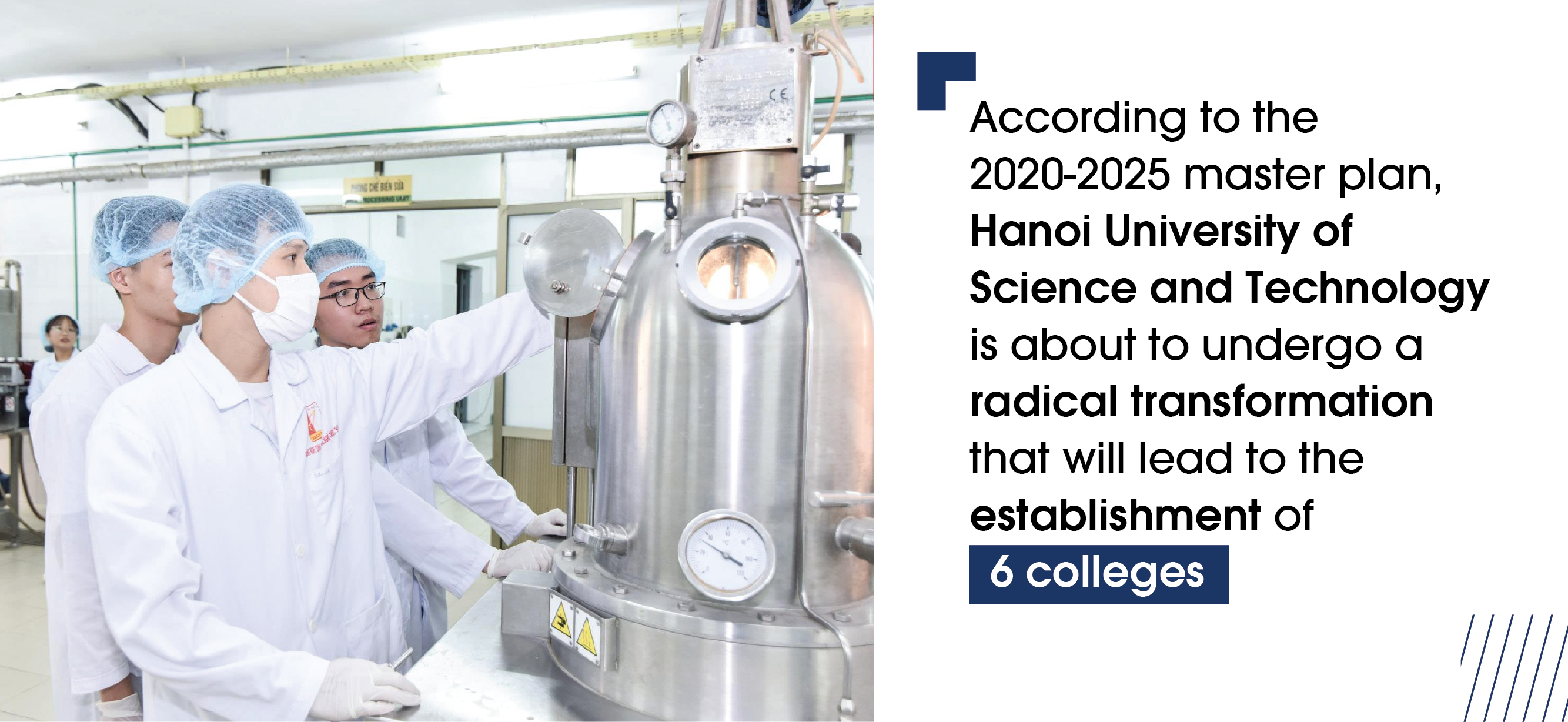
Graphic Designing by San Le
Building a vision for Hanoi University of Science and Technology in the next 5 years
What is your vision for HUST in the next 5 years?
What features strongly in HUST campus planning development are attractive, well-laid-out buildings with large green space designed in line with European standards by the Soviet Union's architects. This part of our campus has been preserved intact.
According to our 2020-2025 master plan, Hanoi University of Science and Technology is about to undergo a radical transformation that will lead to the establishment of 6 or 7 colleges. The first four, including Electrical & Electronic; Mechanical Engineering; Information & Communication Technology ; and Materials Science & Engineering, are taking shape quickly.
As a part of the preparation for the reform, a new building, funded by the World Bank[2], is under construction and scheduled to open in 2022. It is about to house the two colleges of Electrical & Electronic, and Mechanical Engineering. Thus after the transformation, the School of Information & Communications Technology will have for itself a whole 10-floor building, which it is currently sharing with the above-mentioned schools, to expand teaching, learning and researching facilities. Similarly, the others will be relocated to different premises across the campus for more effective work processes.
A variety of organizational and technical shifts, such as high-speed Internet, well-equipped laboratories and smart classrooms, will also take place when we change the working environment from traditional to digital.
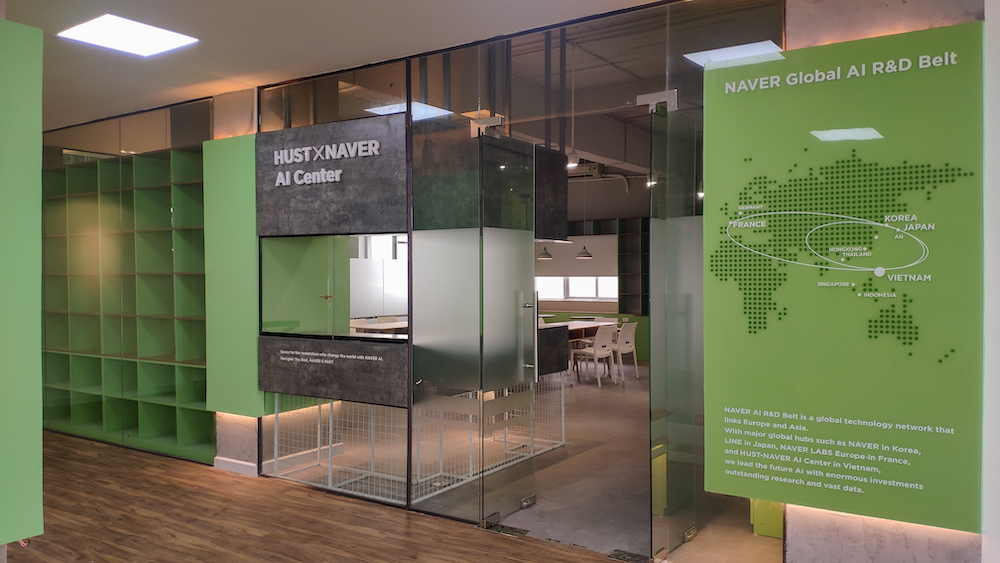
Korean Naver Corp., teams up with HUST to open Artificial Intelligence research centre on March 31, 2021. Photo by CCPR.
There will come the time when we will use minimal physical paper and instead primarily digital documents, when much of teaching and learning at HUST will rely on online platforms, through use of digital technologies, with the support of smartphones, tablets, and laptops.
The push towards digital transformation will also fundamentally change the mindset of faculty members, researchers, scholars, and learners.
Working round-the-clock, 24-hour-a-day, seven-days-a-week could become the norm at some laboratories when digital technologies and automation can be used to great effect in some work.
As our second campus is shaping up, we will soon have more space to grow and to contribute towards the country’s science and technology sector. Meanwhile a lot of improvements and upgrades will stretch across the old campus with the main focus on academic buildings, the university library, and dormitories for undergraduates.
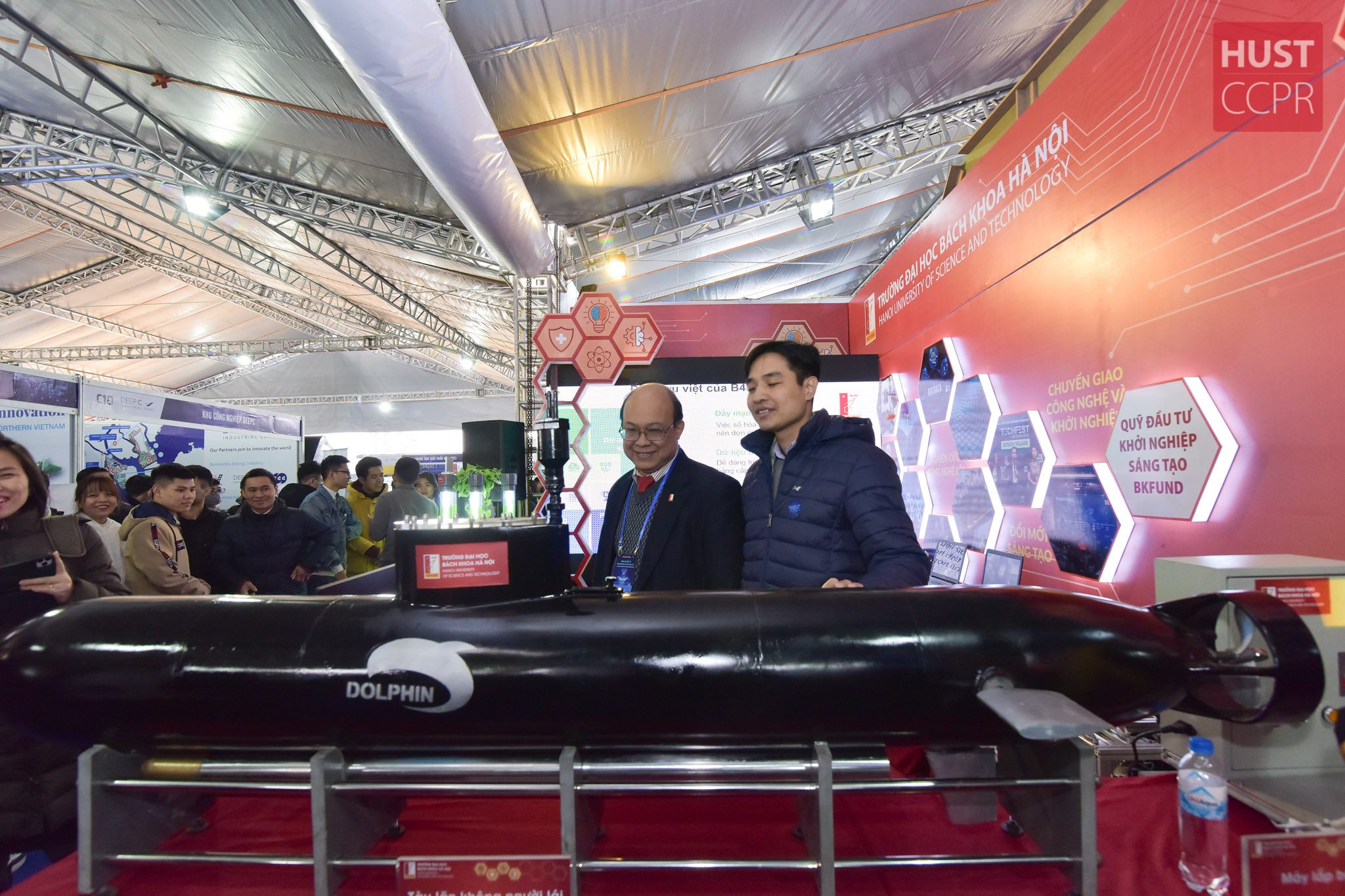
President Huynh Quyet Thang looks at unmanned underwater vehicles "Dolphin" developed by HUST scientists at Vietnam International Innovation Expo on Jan 9-10, 2021. Photo by Kim Chi.
5 years, the length of my term, will pass in a blink of an eye. And yet there is still so much I need to do. HUST has continued its proud history of learning from the past and looking to the future for further development. I have inherited a number of great achievements from my predecessors.
It is true that the next 5 years will bring about new challenges and unforeseen changes. We are talking about rapid development of science and technology, natural disasters and even massive upheavals that could completely shift the mentality of a whole generation. All those changes are the driving force behind the growth of HUST and its students, faculty, and staff.
For example, the Covid-19 pandemic has brought unprecedented disruptions, however, it has accelerated the digital transformation and created a landscape that will continue to encourage innovation and faster technological adoption by young people.
Vietnam has emerged as a thriving middle-income economy. And it is trying to avoid falling into “the middle-income trap” in which the country attains a certain income and gets stuck at that level.
The Communist Party and the government have shown a clear and fierce determination to guide Vietnam to become a developed and high-income country by 2045. Thus, the generation of young people in their 20s now is about to play the leading role in helping the country achieve that goal in the future.
As a pioneer in Vietnam’s higher education, it is necessary for Hanoi University of Science and Technology to be fully aware of its responsibilities and take actions more decisively.
The current leadership team is required to successfully accomplish its 5-year term, paving the way for more successes in the years to follow. It is a privilege but also a challenge.
Conducting in Vietnamese by Dieu Ngoc; Editing by Hanh Pham.
Editor's note:
[1] On November 20, 2020, Clarivate, US-based analytics services provider, recognized Hanoi University of Science and Technology as a top innovator among 235 organizations from academic, government and industry sectors in South and South East Asia. The university is the only academic institution in Vietnam to have received the award.
[2] On May 15, 2017, the World Bank approved US$155 million in financing to strengthen the research, teaching, and institutional capacity of three autonomous universities and improve the management of Vietnam’s higher education system. Hanoi University of Science and Technology, among three research-oriented institutions, was selected to benefit from the funding.